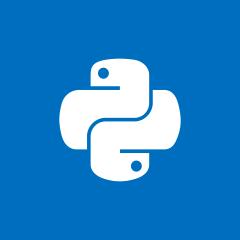为CNN编写训练模型
我正在为TwoStream-IQA编写训练代码,它是一个双流卷积神经网络。该模型通过网络的两个流预测正在评估的补丁的质量分数。在下面的培训中,我使用了上面 GitHub 链接中提供的测试数据集。
训练代码如下:
import os
import time
import numpy as np
import argparse
import chainer
chainer.global_config.train=True
from chainer import cuda
from chainer import serializers
from chainer import optimizers
from chainer import iterators
from chainer import training
from chainer.training import extensions
from PIL import Image
from sklearn.feature_extraction.image import extract_patches
from model import Model
parser = argparse.ArgumentParser(description='train.py')
parser.add_argument('--model', '-m', default='',
help='path to the trained model')
parser.add_argument('--gpu', '-g', default=0, type=int, help='GPU ID')
args = parser.parse_args()
model = Model()
cuda.cudnn_enabled = True
cuda.check_cuda_available()
xp = cuda.cupy
model.to_gpu()
## prepare training data
test_label_path = 'data_list/test.txt'
test_img_path = 'data/live/'
test_Graimg_path = 'data/live_grad/'
save_model_path = '/models/nr_sana_2stream.model'
patches_per_img = 256
patchSize = 32
print('-------------Load data-------------')
final_train_set = []
with open(test_label_path, 'rt') as f:
for l in f:
line, la = l.strip().split() # for debug
tic = time.time()
full_path = os.path.join(test_img_path, line)
Grafull_path = os.path.join(test_Graimg_path, line)
inputImage = Image.open(full_path)
Graf = Image.open(Grafull_path)
img = np.asarray(inputImage, dtype=np.float32)
Gra = np.asarray(Graf, dtype=np.float32)
img = img.transpose(2, 0, 1)
Gra = Gra.transpose(2, 0, 1)
img1 = np.zeros((1, 3, Gra.shape[1], Gra.shape[2]))
img1[0, :, :, :] = img
Gra1 = np.zeros((1, 3, Gra.shape[1], Gra.shape[2]))
Gra1[0, :, :, :] = Gra
 HUWWW
HUWWW2回答
-

MM们
简而言之,您不恰当地调用numpy.asarray:numpy.asarray不连接两个cupy.ndarrays,而连接两个numpy.ndarrays。您的代码简介:import numpy, cupyfinal_train_set = []N_PATCH_PER_IMAGE = 8for i in range(10): label = 0 temp_slice_1 = [numpy.zeros((3, 3)) for j in range(N_PATCH_PER_IMAGE)] temp_slice_2 = [numpy.zeros((3, 3)) for j in range(N_PATCH_PER_IMAGE)] for j in range(N_PATCH_PER_IMAGE): temp_slice_1[j] = cupy.array(temp_slice_1[j]) temp_slice_2[j] = cupy.array(temp_slice_2[j]) final_train_set.append( [ # attempting to concatenate two cupy arrays by numpy.asarray numpy.asarray([temp_slice_1[j], temp_slice_2[j]]), label ] )错误import numpy as npimport cupy as cpprint("two numpy arrays")print(np.asarray([np.zeros(shape=(1,)), np.zeros(shape=(1,))]))print(np.asarray([np.zeros(shape=(1,)), np.zeros(shape=(1,))]).dtype)print()print("two cupy arrays")print(np.asarray([cp.zeros(shape=(1,)), cp.zeros(shape=(1,))]))print(np.asarray([cp.zeros(shape=(1,)), cp.zeros(shape=(1,))]).dtype)two numpy arrays[[0.] [0.]]float64two cupy arrays[[array(0.)] [array(0.)]]object解决方法:注释掉两行import numpy # not import cupy herefor i in range(10): label = 0 temp_slice_1 = [numpy.zeros((3, 3)) for j in range(N_PATCH_PER_IMAGE)] temp_slice_2 = [numpy.zeros((3, 3)) for j in range(N_PATCH_PER_IMAGE)] for j in range(N_PATCH_PER_IMAGE): # temp_slice_1[j] = cupy.array(temp_slice_1[j]) <- comment out! # temp_slice_2[j] = cupy.array(temp_slice_2[j]) <- comment out! final_train_set.append( [ # concatenate two numpy arrays: usually cupy should not be used in dataset numpy.asarray([temp_slice_1[j], temp_slice_2[j]]), label ] )脚注在您提供的代码中,xp未指定,因此您无法从任何人那里得到答案。如果您无法分离问题,请发布您的代码的整体,包括模型。我猜您可能由于其他原因无法运行训练代码。在这段代码中,数据首先在final_train_set. 但是如果图像数量很大,主内存就会耗尽并被MemoryError抬高。(换句话说,如果图像数量很少,并且您的内存足够大,则不会发生错误)在这种情况下,以下参考资料(Chainer at glass和Dataset Abstraction)会有所帮助。 -

千巷猫影
我使用 OpenCV、Scipy 和其他一些用于质量评估的模块找到了这个Github 存储库。这是代码:# Python code for BRISQUE model# Original paper title: No-Reference Image Quality Assessment in the Spatial Domain# Link: http://ieeexplore.ieee.org/document/6272356/import cv2import numpy as npfrom scipy import ndimageimport mathdef get_gaussian_filter(): [m,n] = [(ss - 1.0) / 2.0 for ss in (shape,shape)] [y,x] = np.ogrid[-m:m+1,-n:n+1] window = np.exp( -(x*x + y*y) / (2.0*sigma*sigma) ) window[window < np.finfo(window.dtype).eps*window.max() ] = 0 sum_window = window.sum() if sum_window != 0: window = np.divide(window, sum_window) return windowdef lmom(X): (rows, cols) = X.shape if cols == 1: X = X.reshape(1,rows) n = rows X.sort() b = np.zeros(3) b0 = X.mean() for r in range(1,4): Num = np.prod(np.tile(np.arange(r+1,n+1), (r,1))-np.tile(np.arange(1,r+1).reshape(r,1),(1,n-r)),0) Num = Num.astype(np.float) Den = np.prod(np.tile(n, (1, r)) - np.arange(1,r+1), 1) b[r-1] = 1.0/n * sum(Num/Den * X[0,r:]) L = np.zeros(4) L[0] = b0 L[1] = 2*b[0] - b0 L[2] = 6*b[1] - 6*b[0] + b0 L[3] = 20*b[2] - 30*b[1] + 12*b[0] - b0 return Ldef compute_features(im): im = im.astype(np.float) window = get_gaussian_filter() scalenum = 2 feat = [] for itr_scale in range(scalenum): mu = cv2.filter2D(im, cv2.CV_64F, window, borderType=cv2.BORDER_CONSTANT) mu_sq = mu * mu sigma = np.sqrt(abs(cv2.filter2D(im*im, cv2.CV_64F, window, borderType=cv2.BORDER_CONSTANT) - mu_sq)) structdis = (im-mu)/(sigma+1) structdis_col_vector = np.reshape(structdis.transpose(), (structdis.size,1)) L = lmom(structdis.reshape(structdis.size,1)) feat = np.append(feat,[L[1], L[3]]) shifts = [[0,1], [1,0], [1,1], [-1,1]] for itr_shift in shifts: shifted_structdis = np.roll(structdis, itr_shift[0], axis=0) shifted_structdis = np.roll(shifted_structdis, itr_shift[1], axis=1) shifted_structdis_col_vector = np.reshape(shifted_structdis.T, (shifted_structdis.size,1)) pair = structdis_col_vector * shifted_structdis_col_vector L = lmom(pair.reshape(pair.size,1)) feat = np.append(feat, L) im = cv2.resize(im, (0,0), fx=0.5, fy=0.5, interpolation=cv2.INTER_CUBIC) return featim = ndimage.imread('example.bmp', flatten=True)feat = compute_features(im)print feat
 随时随地看视频慕课网APP
随时随地看视频慕课网APP
相关分类


 Python
Python